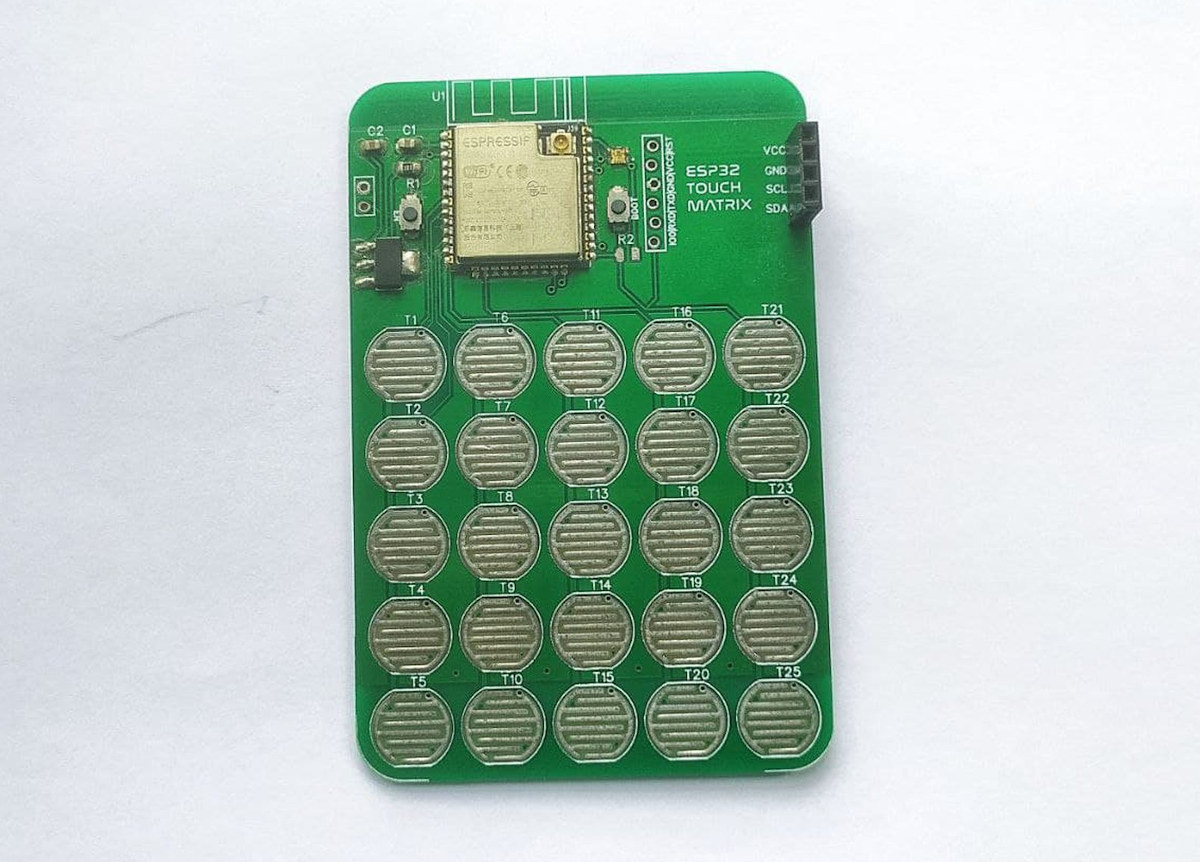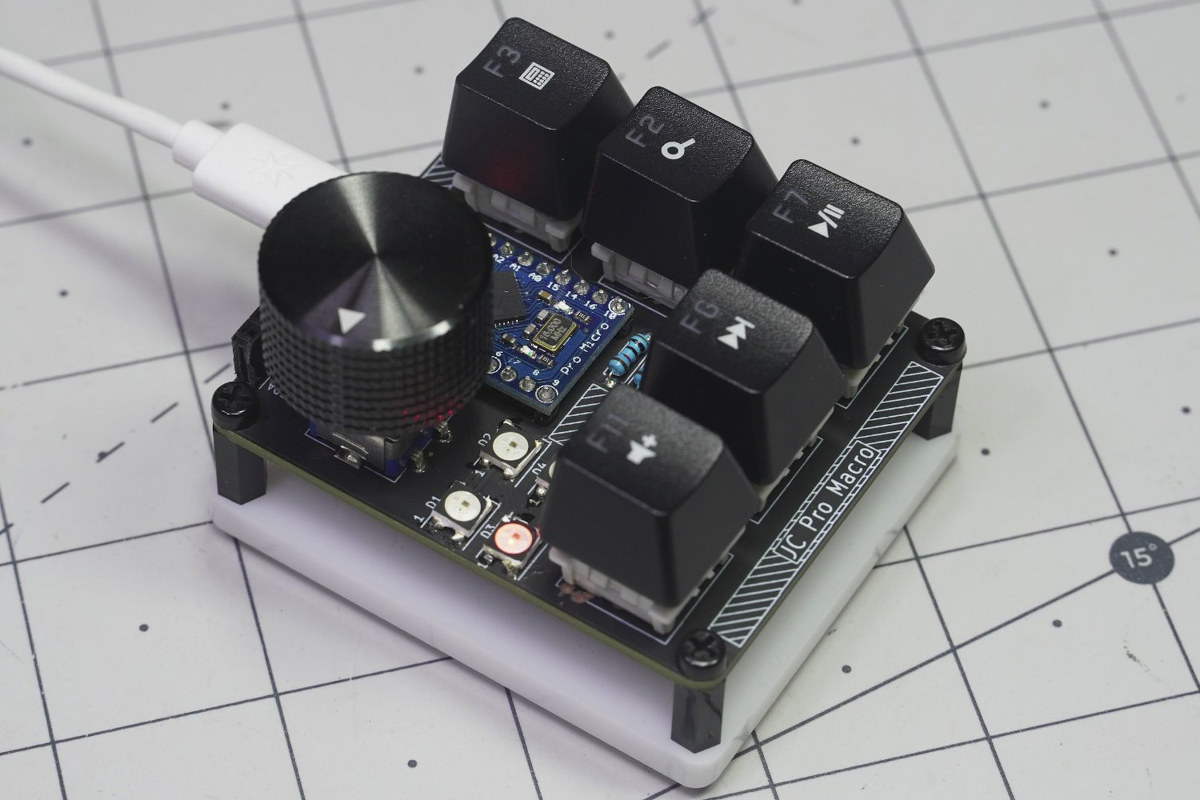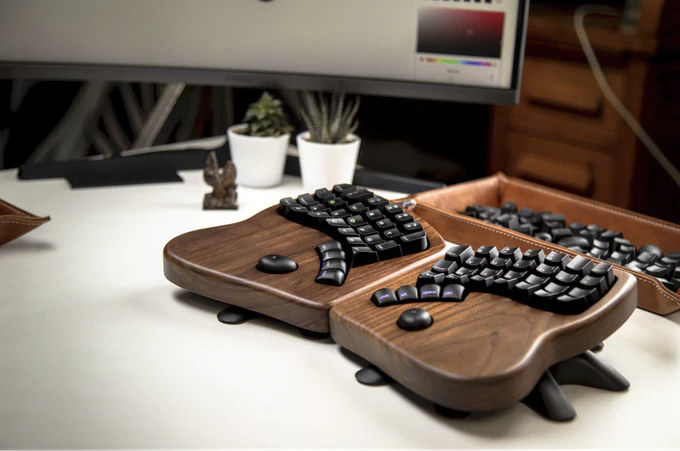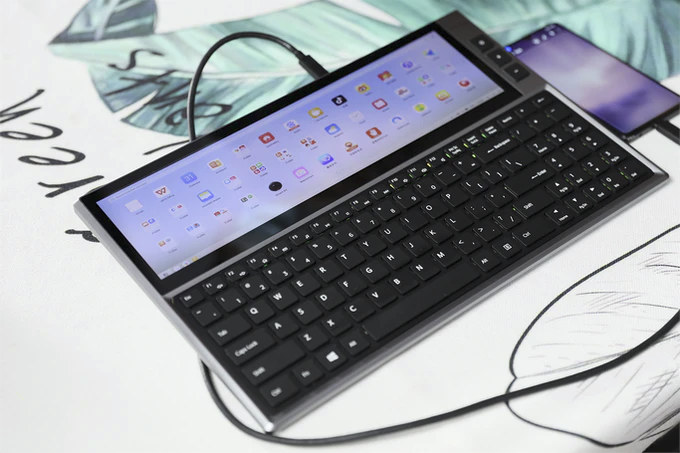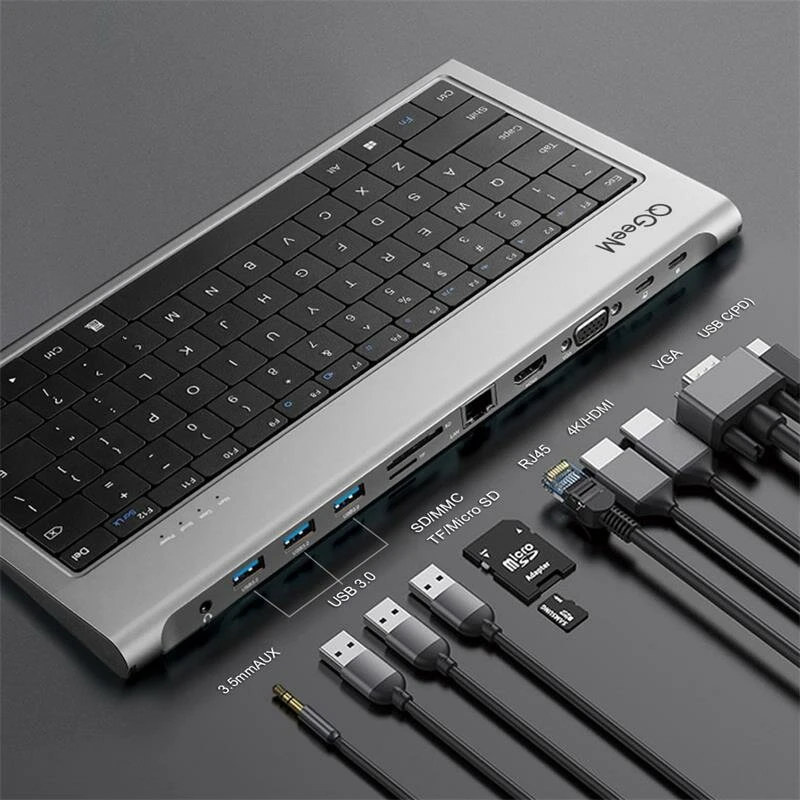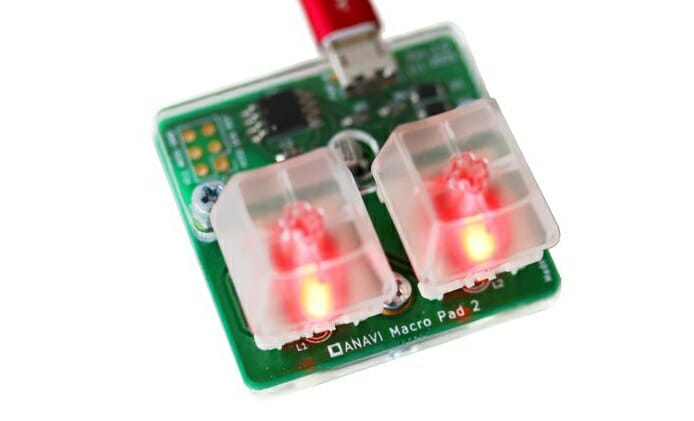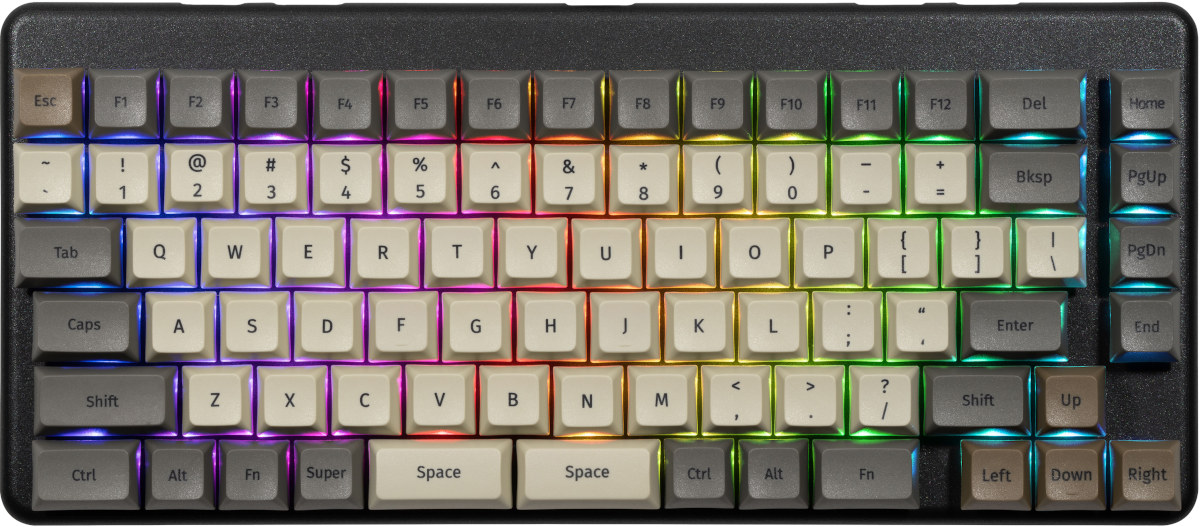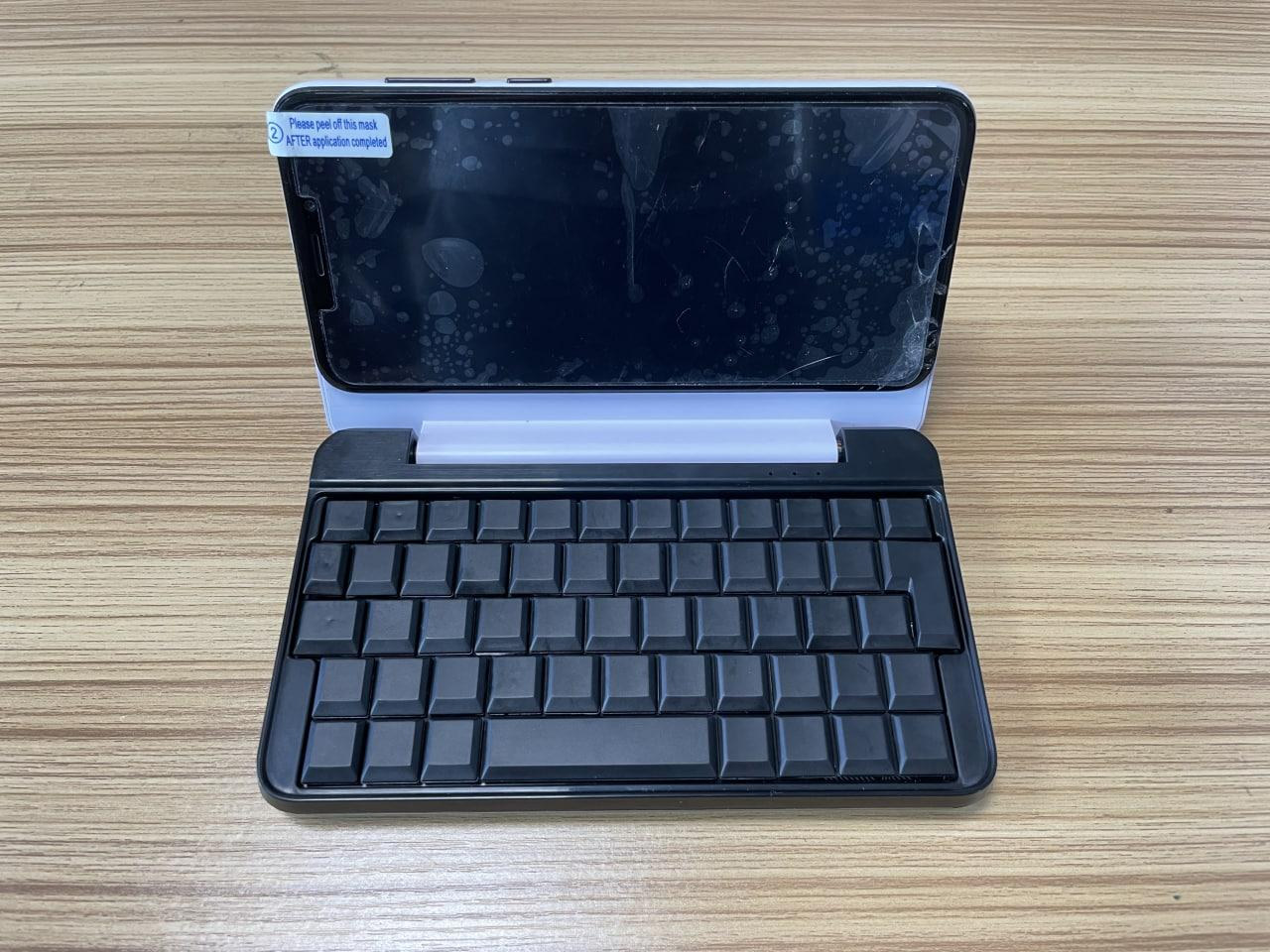Besides the addition of Bluetooth, there are many differences between ESP8266 and ESP32 and one of the lesser-known interfaces may be ESP32’s touch sensor interface. India-based Electro Point’s ESP32 Touch Matrix makes good use of the touch sensor interface with 25 touch pads arranged in a 5×5 matrix creating a wireless keypad that could connect over WiFi or Bluetooth to a host. ESP32 Touch Matrix board specifications: Wireless module – ESP32-WROOM-32U with Espressif ESP32-D0WD dual-core Tensilica processor, 32Mbit SPI flash, 2.4 GHz WiFi, and Bluetooth LE connectivity 25 keys arranged in a 5×5 matrix Expansion – 4-pin I2C header for expansion, e.g. an OLED display Programming – Programming headers Misc – RGB status indicator, EN button Power Supply – 5V input via 2-pin header; built-in 3.3v regulator for ESP32 Dimensions – TBD When a capacitive load, such as a human hand) is in close proximity to the sense-pad, the sensor […]
Arduino powered 5-key keypad includes a rotary encoder
There was a time when people were happy to interact with their computer with a standard keyboard and mouse. But in recent years, we’ve noticed more programmable, custom-designed keyboards with more ergonomy, a built-in touchscreen display, integrated into a multi-function USB dock/hub, as well as tiny keypads with a couple of mechanical keys to speed up specific functions. JC Pro Macro is another one of those compact USB keypads. Powered by an Arduino Pro Micro board, the keypad features five mechanical keyboard keys, and adds a rotary encoder, plus an optional I2C OLED display for debugging, and some I/Os to control external hardware like a fan. JC Pro Macro keyboard’s features and specifications: MCU board – Arduino Pro Micro compatible board with Microchip ATmega32U4 AVR microcontroller User input 5x programmable keyswitches Rotary encoder to control volume or other “rotary-y” elements, plus a 6th input switch, i.e. you can press it […]
Keyboardio Model 100 wooden keyboard runs open-source Arduino firmware (Crowdfunding)
Are you bored with keyboard news yet? Keyboardio Model 100 does not quite look like most keyboards though. It’s basically a piece of art with an enclosure made of walnut or maple hardwood, and designed as an ergonomic keyboard with left and right parts with a total of 64 mechanical switches with RGB LEDs and custom-sculpted keycaps. Keyboardio Model 100 also runs Kaleidoscope open-source firmware programmed in the Arduino IDE, and can be customized by the user with Chrysalis open-source, cross-platform graphical configuration tool. The community is also working on porting QMK firmware to the keyboard. The Keyboardio Model 100 ships with QWERTY keycaps, but alternative keycap sets with Dvorak, Colemak, Linear A, or blank legends are available as a add-on. Other accessories include a 1.5 USB-A to USB C cable for connection to the host, a 10cm RJ45 interconnect cable and a 1m RJ45 interconnect cable to connect the […]
FICIHIP multifunctional keyboard includes 12.6-inch touchscreen display (Crowdfunding)
Keyboards have made the news in recent months with stories ranging from a customizable programmable keyboard, to a keyboard part of a USB-C dock, and a 2-key open-source keypad. FICIHIP multifunctional keyboard is special in its own way as besides a traditional QWERTY keyboard is also includes a 12.6-inch touchscreen display which makes it looks like a computer, but no, it’s really just a USB keyboard that happens to come with a display design for computers and smartphones. FICIHIP multifunctional keyboard key features and specifications: QWERTY keyboard with RGB backlight and hot-swappable mechanical keycaps for DIY layout on K2 model only Display – 12.6-inch screen with 1920×515 resolution @ 60 Hz, 10-point multitouch panel HDMI input – HDMI 1.4 port USB – USB 3.1 Type-C port, 2x USB 2.0 ports Aluminum body That means the keyboard acts as a second display either through the USB-C port when connected to a […]
Keyboard also serves as USB-C hub with 11 ports from audio jack to VGA
I’m not sure who needs this, but if you’d like a USB-C hub with a QWERTY keyboard and a good variety of ports, you’ll be glad QGeeM Keyboard and USB-C hub/dock station exists. The device comes with one HDMI port, one VGA D-Sub connector, 3x USB 3.0 ports, a memory card reader, an RJ45 port for Ethernet, an audio jack, and USB-C port with USB-C PD 3.0 support up to 100W. This may look like a keyboard PC, but nope, it’s just a USB-C hub that happens to have a built-in keyboard. QGeeM Keyboard and USB-C hub key features: Storage – MicroSD and full-size SD/SDXC card readers (multiplexed) up to 2TB Video Output HDMI 1.4 port up to 4Kp30, VGA D-Sub connector up to 1920×1080 @ 60 Hz Dual display setups up to 1080p60 per display Mirroring and extended display modes supported Audio -3.5mm audio AUX jack Networking – Gigabit […]
2-key mechanical USB keypad runs QMK firmware (Crowdfunding)
System76 Launch high-end customizable keyboard for PC’s that we covered earlier this week, and ANAVI Macro Pad 2 2-key mechanical USB keypad should not have anything in common, but they do to some extent. Both happen to feature backlit mechanical keys, are open-source hardware, and run the same Quantum Mechanical Keyboard Firmware (QKM) open-source firmware. ANAVI Macro Pad 2 specifications: MCU – Microchip ATtiny85 8-bit AVR microcontroller with 8 KB ISP Flash memory, 512 bytes EEPROM, 512 bytes SRAM Keys – Two Gateron Red mechanical switches with 3 mm LED backlighting and translucent keycaps Host connection – MicroUSB port Dimensions – 40×38 mm OSHWA certification – BG000077. ANAVI Technology says the key is compatible with Windows, MacOS, and GNU/Linux support, but as a USB keypad, it should probably just work with any host device supporting the USB HID class. ANAVI Macro Pad 2 is a smaller version of the earlier […]
System76 Launch is an open-source hardware, configurable keyboard
System76, the company better known for its Linux laptops, has launched an open-source hardware, configurable keyboard. Meet System76 Launch. The keyboard firmware, schematics, and mechanical files are all open-source. Launch ships with an ANSI US QWERTY layout but can be customized through a configuration program for Windows, Linux, and macOS, and a key puller is included to easily replace/change keycaps as needed. System76 Launch keyboard specifications: Open-source custom PCB Individually addressable RGB LED backlighting N-Key Rollover to detect all keystrokes no matter how many keys are pressed simultaneously Sockets and Switches Kailh MX Hotswap Sockets Kailh Box Jade or Kailh Box Royal Switches Key Caps – PBT plastic, dye sublimated legend, XDA profile Layout – ANSI US QWERTY Integrated USB hub with 2x USB 3.2 Gen 2 Type C (Up to 10 Gbps), 2x USB 3.2 Gen 2 Type A (Up to 10 Gbps) Open-source milled chassis design with detachable […]
PinePhone Keyboard to make for a cheaper, albeit slower Cosmo Communicator
Pine64 PinePhone is a popular Linux smartphone among the developers and Linux enthusiasts’ communities and some of the most popular Linux operating systems support by the phone include KDE Plasma Mobile, PostMarket OS, Manjaro, and UBports for an Ubuntu Touch like interface. But soon, you’ll be able to use your PinePhone like a portable Linux computer, a 5.95-inch mini laptop of sorts, that’s similar to the 2-in-1 Cosmo Communicator device, but at a much lower price, albeit with lower performance, thanks to PinePhone Keyboard accessory. The PinePhone Keyboard is not quite ready yet, but Lukasz Erecinski (aka Luke) has shared the progress of the latest version of the prototype, and almost looks like a finished product, albeit we’re told another revision will be made as the tolerances on the keycaps are not suitable. Here are some of the main features we can expect from the keyboard: QWERTY keyboard (by default). […]


